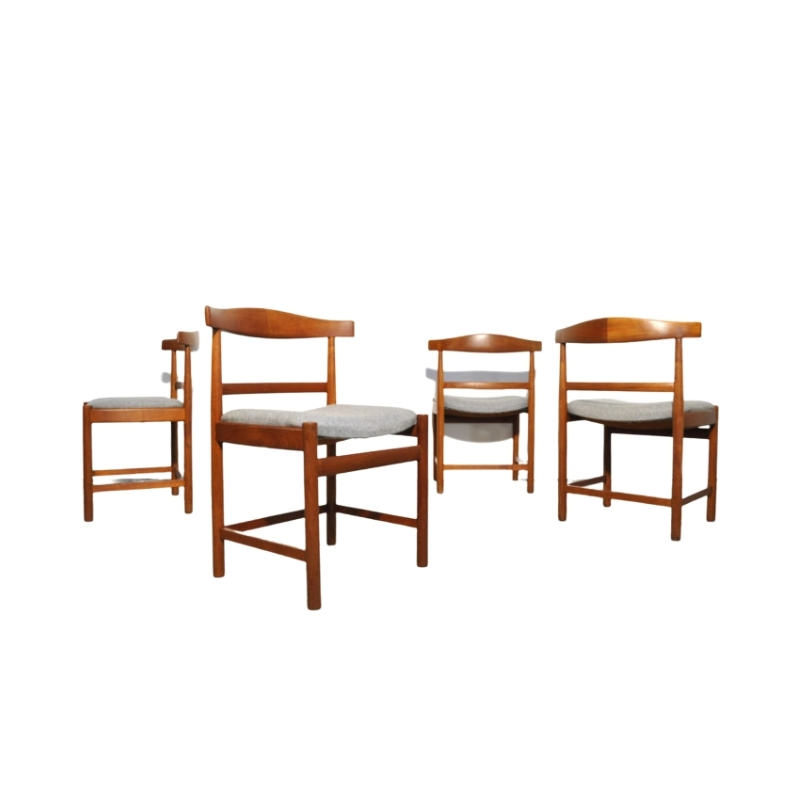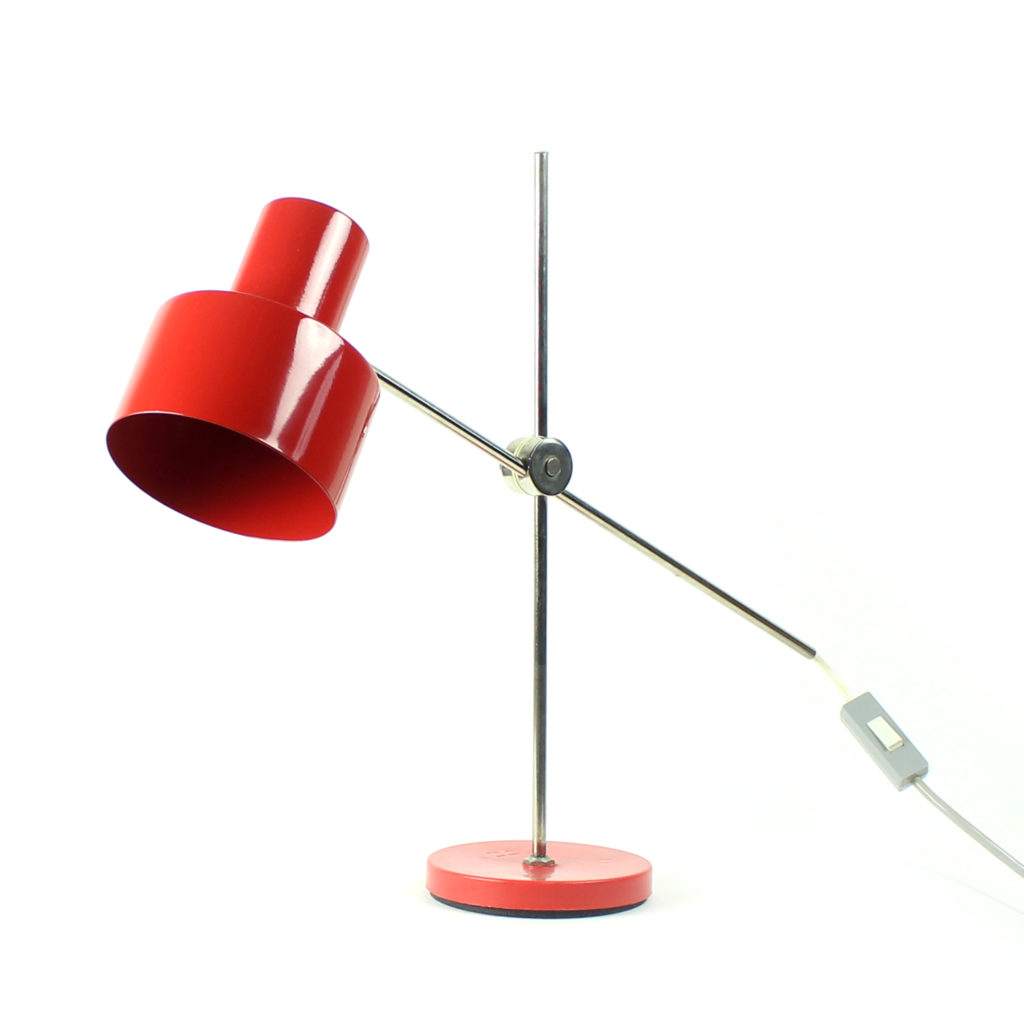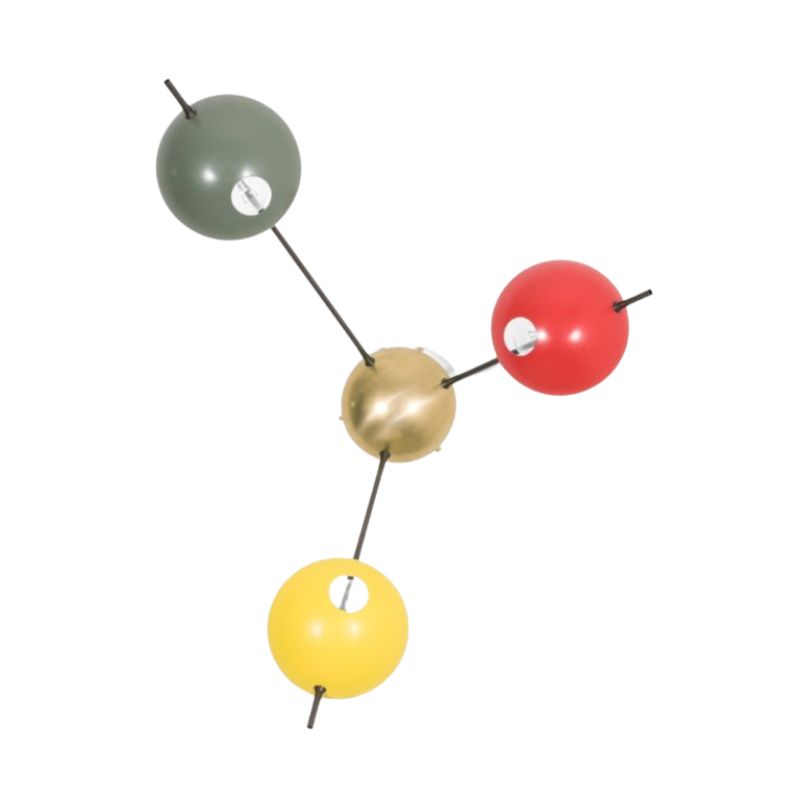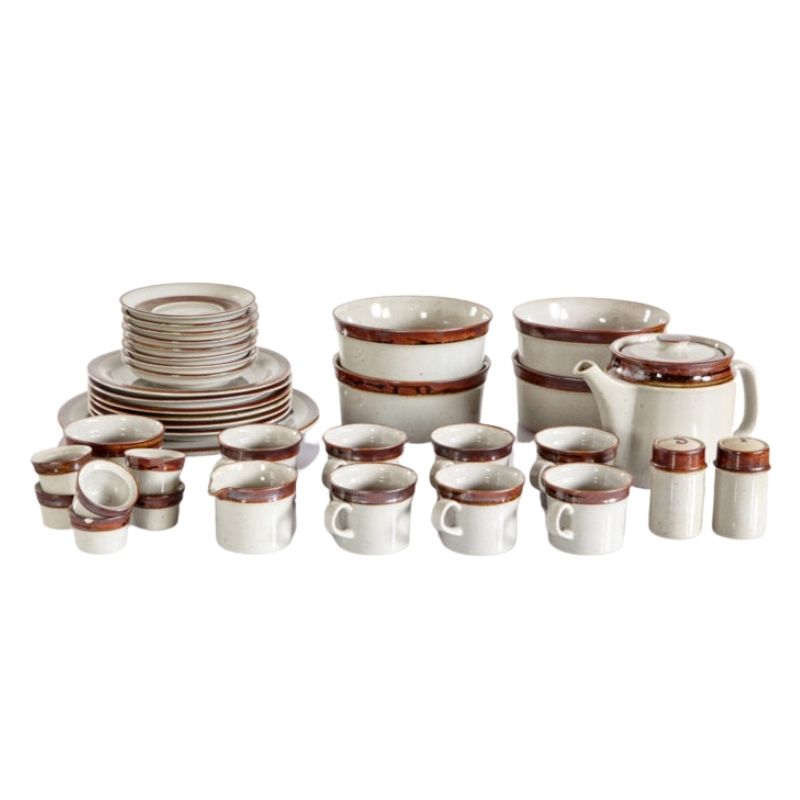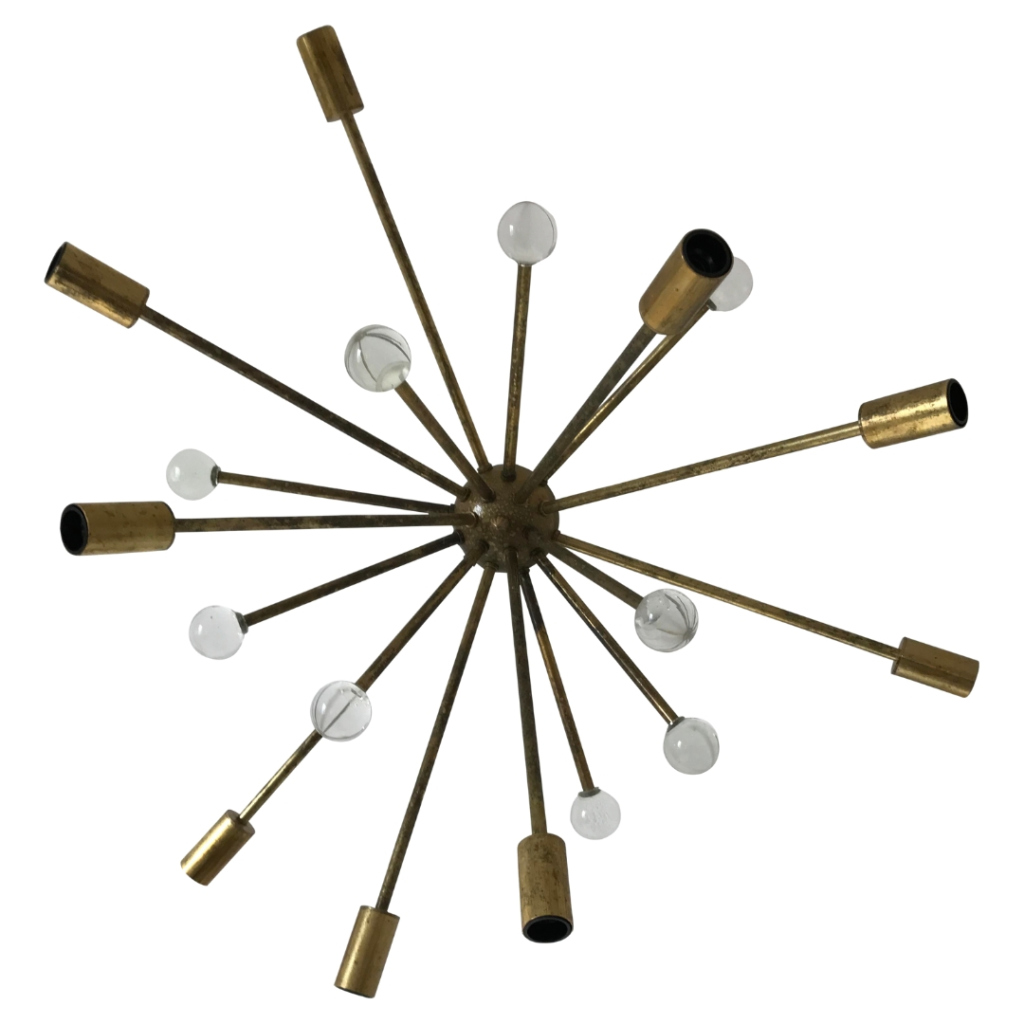There was a box sitting on the table and my children's cat decided to piss in it. Nobody noticed it for a few days.
The table top is Herman Miller - rosewood. We have owned it and used it for 30 years and this is the first damage it has suffered. Is there anything I can do? (To the table, not the cat.)

I don't think I would know that wasn't a common water stain if you hadn't told me of its squalid origin. So you can probably treat it like a common water stain: take all the finish off of the table top, then treat it with oxalic acid, then refinish the table.
I would recommend applying the oxalic acid to the entire table top, because otherwise the color may end up a bit inconsistent.
Tough break, Scott.
I second Lief's suggestion to apply oxalic acid wash over the entire surface.
If you do plan to do this yourself, here are my suggestions:
1) Vastly exceed the manufacturer's suggested ratio of oxalic acid to water.
2) Use boiling water. Mix the oxalic acid granules in bowling water until *almost* all of it has dissolved. This is how you know you have reached the maximum dissolved content of acid in water.
3) Apply liberally over the entire surface of the table with a rag or brush; let pool over your stains.
4) Once your solution is cool, it is essentially useless. Let it sit for a minute at room temperature and then collect it in a towel or squeegee it off the surface.
5) Repeat 1-4 until the stain has lifted
Thanks for responding, guys. Stripping and refinishing that top might be a bit beyond my skillset. I do know someone who could do it, though. I might try oxalic acid on just the stain first and see if I get lucky. I don't know where to get oxalic acid, but I'll find it. Somebody suggested hydrogen peroxide at 3%? Has anybody tried that? I might flip the table over and do a test on the underside - if I get lucky, the cat will be there when I flip the table.
I would strongly recommend against spot use of oxalic acid. The strong likelihood is that you will make it worse. It can easily over lighten just that area of the table, and then you have a bigger spot and finish in even worse condition.
As to the idea of using oxalic acid over the existing finish, I guess it would depend on the type of the existing finish. It might work with a oil finish that does not bead up the water much, but you run the risk of creating a surface that has leopard spots where the oxalic has penetrated. If the finish beads water, then you are only going to destroy it by leaving oxalic acid on there long enough to find its way through. And you will create leopard spot. And you will have to take the damaged finish off anyway.
Teakhound: it sounds like you have successfully done this before. What was the finish on the piece?
It's a bit disconcerting when you blokes have different opinions - sort of like when you're a little kid and your parents disagree with eachother.
I have the table upside down now and I'm reading the label underneath it. The date of manufacture was 1989 and the top is finished in Millafin, which is (or perhaps was) Herman Millers 'synthetic polymer finish'. Apparently it provides 'increased resistance to stains', but is no match for cat piss. Still it is a nice surface, hard wearing surface and I'm reluctant to disturb it.
I have put a patch of hydrogen peroxide on the underside and a patch of a product called Woodclean, which according to the label has oxalic acid in it. The underside of the table does not have the same finish as the top and there is no cat piss there, so it might not be much of a test. Though if neither of them bleach the timber it might be safe to try them on the top in a small patch and see if either will lighten the stain.
I am sure you would know if you got the dreaded leopard spots. They aren't subtle. The once I made this mistake, it was with a teak table with a thick oil and varnish finish. The water beaded up immediately. And like an idiot I left it alone and until it dried. Maybe if I had keep wiping it and then dried the table after a reasonable 10 minutes it would not have happened.... The leopard spots were so bright I could not fully get them out after I removed the finish and tried oxalic again multiple times. I did finally fight my way back to very subtle spots, though.
I would think that an HM contract table would have a harder wearing finish than oil, but I don't know much about HM.
It could quite possibly be the case that you, teakhound, are the master of oxalic acid!
Sorry for the tangent, but to clarify teakhound, are you using Restore-a-Finish on wood surfaces that have had their existing finish removed, or only to rejuvenate existing finishes. I have never done the former (the latter is standard practice for me), and I thought that Howards' actually recommends against use on untreated wood.
And although I don't know what is exactly in RAF, I would like to clarify that the "Neutral" version is clear, without any pigment. I have occasionally read on here cautionary posts for RAF due to concerns about adding stain to a finish. And I would agree with that viewpoint for their numerous other stained options (walnut, dark walnut, golden oak, etc). However, I have had very good results with the Neutral, except for one oddball Lane side table case where the RAF application immediately turned a worn area black within a few seconds. Ironically that is how I first heard about oxalic acid on this site, and bought a bottle of OA crystals that should last well past my lifetime.
Cdsilva - Yes, I realize we are getting into a tangent here. But yes, the latter, I.e., restoring an existing finish. To clarify, I have successfully applied an oxalic solution over an existing finishing to remove black stains and without removing the original finish. Following up with a light sanding and then application of RAF has been successful for me in the past for walnut, oak, and teak. Low tannin content of rosewood and the limited amount of rosewood in my house means I have not tried this with rosewood.
I do like RAF in walnut applied to both teak and walnut, as thing seems to really bring out the grain in both. I avoid colored RAF if the piece has dings or nicks, as the color builds up in the dings and looks awful.
That said, if a piece has significant dings and scratches, I will steam these out, which requires removal of all of the finish. Then I oil with straight linseed rather than RAF.
Thanks again, all.
After repeated tests, neither products did anything to the timber on the underside. It does not have the same finish as the topside.
I have now had a few goes at small patches of the topside.
I am using a small brush and painting the products on but not leaving them for long - maybe 20 minutes. I've done it twice - wiping with a damp cloth and letting dry between applications.
I'm not noticing a change, yet.
The H Peroxide doesn't cover as well as the Woodclean.
That 'synthetic polymer finish' (whatever that is) seems pretty tough, which I guess is good and bad. It certainly let the cat piss through.
When I wipe off both products, the patch looks milky, but this mostly goes away when it dries.
The whole top could probably do with a wax or something, so I might as well do that even if I have no luck with the stains. Any idea what product would be best?
Sorry to jump on a little late in the discussion, but a few comments....
RAF is basically a mixture of solvents (main components being alcohol and mineral spirits I believe) and a mixture of finish (probably shellac), and a little pigment (if the colored versions). All RAF does is dissolve/soften the existing finish, mix with the little bit of finish that is in the product, and as you wipe it around, blends everything together. The fact that it is really loose (i.e. not viscous,) probably helps the mixture self-level to some extent. I am not much of a fan of the product myself, but others seem to find it useful. RAF is not suitable to be used as a finish by itself. RAF does not contain Oaxalic acid, and has no bleaching ability. It also will not work on polyurethane. Considering all of this, I don't see RAF being of any help to you here.
I would contact HM to be 100% sure, but based on the production date and the reference to Millafin, you are probably dealing with a more modern finish (urethane, 2-part, conversion, etc.) that will not respond to RAF and also will not lend to the OA penetrating the surface. This being said, the urine obviously penetrated and damaged the surface where it is stained, so the OA could potentially, show some effectiveness on the urine stain in this location. I have only used OA on stripped, bare wood, so my experience trying to use it on a surface that still has finish, is limited. However, I can see how Leif's spots would occur if the OA penetrates anywhere that is not stained. I also have concerns on existing finish damage, finish lift, and grain raising with trying to use the OA on a finished surface.
As discussed earlier, you should only use OA crystals. Sure many products have OA in them (Barkeepers friend, Wood Clean, etc.), but it is typically in a concentration that is not high enough to be very efficient or effective on wood stains like this. Everything Teakhound described about OA application is true in my experience (concentration, water temp, etc.). Attached is an image of the packaging on the straight crystals that I use. I have found this at Hallman Lindsay and Benjamin More paint stores. Based on your use of 'bloke' and 'down here,' I am assuming you are in Australia. You should be able to find straight OA at a paint store down there. Also, always make sure the OA is neutralized on the surface after use. Once the water evaporates, the OA crystals are still present. If you then sand, you can kick these into the air and breath them in; OA crystals in your lungs is bad, so make sure you neutralize and wear a mask if you have to sand. It will also cause all sorts of finish issues if it is still present when the finish is applied.
Finally, there is the wild card of this stain being produced by urine. I am pretty clear on using OA for normal water stains, but am not sure how it will react with the additional components of urine. I have used hydrogen peroxide - baking soda on urine stains in hardwood floors with great success in the past, so HP may well be the way to go here. If I were to guess, I suspect both HP and OA will work.
All things considered, it wont hurt to try Teakhound's method, but at the end of the day, considering all the information, I really think you are going to need to strip-sand-refinish to get a proper repair here. Sorry, I know that is not what you wanted to hear...
I tried to find out more about HM's trademarked Milafin (the correct spelling) finish but couldn't find anything online, but I also quite my search after 10 minutes, so maybe it's out there somewhere. Seems like determining what this finish is would be the first step in figuring out how to deal with the stains...?
Howard's Restore-a-Finish has an MSDS sheet online, if you want to know exactly what's in it:
http://howardproducts.com/wp-content/uploads/2016/03/HOW-102_Restor-A-Fi...
And lastly, most of the time you can see what country a DA user is from by clicking on his or her username.
If you need any help, please contact us at – info@designaddict.com



